
Your Guide to an Ayurvedic Spring Cleanse
Spring is often linked to a sense of renewal. As the daylight hours stretch out longer, temperatures become warmer, and blossoms emerge, you may find yourself with a desire to engage in a spring cleanse or another ritual of renewal. Ayurveda offers gentle and time-tested methods for cleansing and resetting. An ayurvedic spring cleanse can be a fitting way to practice self-care and refresh your body and mind in preparation for the warmer months.
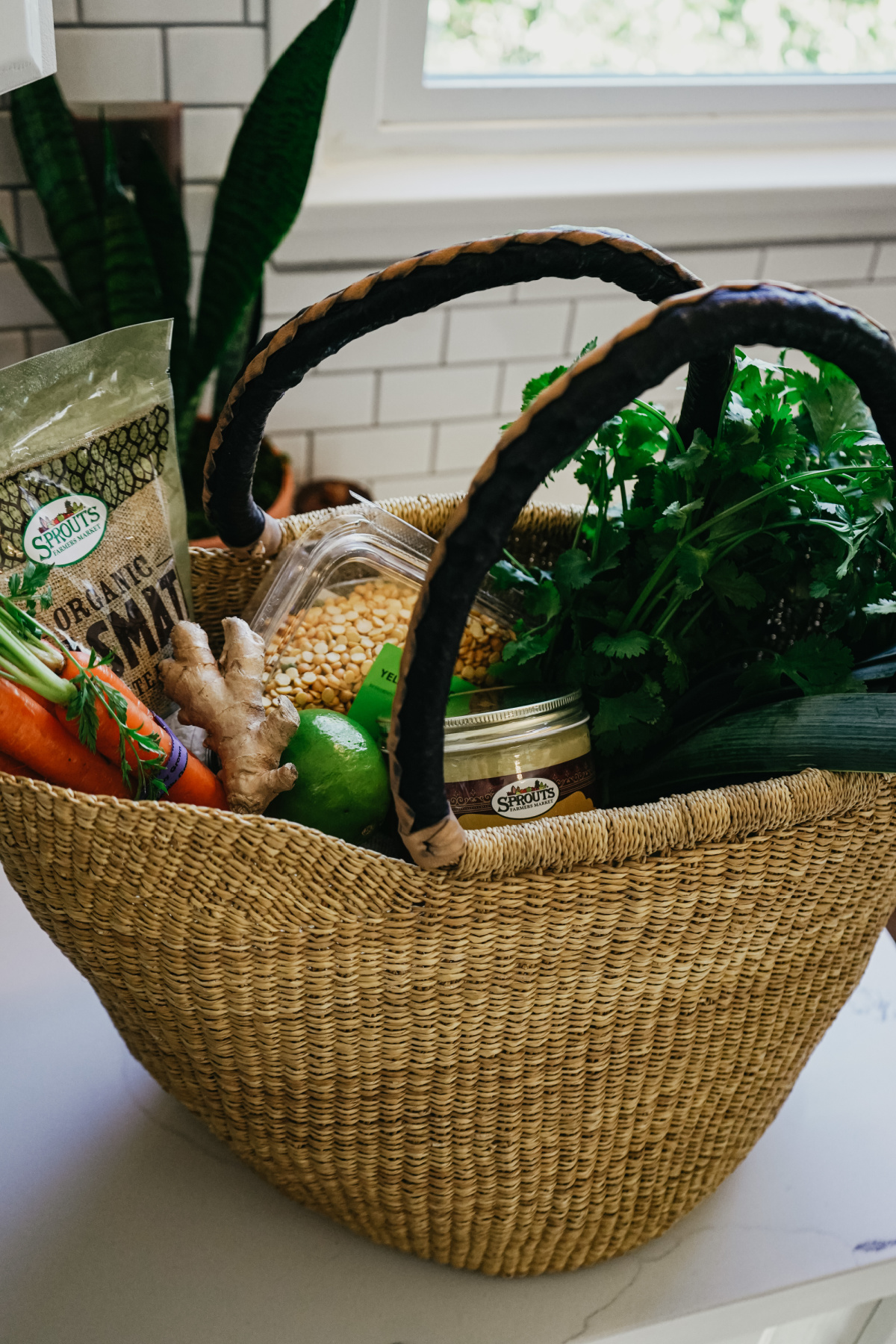
Why A Spring Cleanse?
Ayurveda teaches that seasonal changeovers are the ideal time to cleanse, as your body is already in a transitional mode during those times. Early spring and early autumn are traditionally regarded as key times for purification practices. However, this depends a bit on the climate where you live. It is best not to cleanse in the middle of winter or during very cold times of the year, as the body is already weakened by the cold and needs extra reserves to stay healthy and strong.
However, when the season changes from winter to spring and there is a natural inclination to spend more time outdoors, eat lighter foods, and perhaps shed some of the excesses accumulated during winter, this is an ideal time to try an ayurvedic spring cleanse (O’Donnell, 2015).
During winter it is appropriate to eat a greater proportion of dense, heavy, moist foods. On the other hand, spring is naturally ruled by kapha dosha (which is by nature heavy, moist, and dense), so spring is a great time to focus on balancing foods that are light, warm, dry, bitter, and astringent. A classic ayurvedic cleanse consists mainly of kitchari (read on for a recipe and further details!) and you may also want to feature bitter and astringent vegetables such as broccoli, cauliflower, and dark leafy greens in your ayurvedic spring cleanse.
Why a kitchari cleanse? Made primarily of rice and mung dal, kitchari contains carbohydrates, fat, and protein, making it a complete meal. Also, it is extremely easy for your body to digest. Therefore, rather than focusing on the digestive process, your body can put its resources toward cleansing and renewal. Furthermore, split yellow mung dal is slightly astringent, and its astringent and fibrous nature have a gentle scraping action on the intestines (Nowland, 2021).
When Is a Cleanse Not Ideal?
No matter the season, there are circumstances under which individuals should not undertake a cleanse. Generally speaking, cleansing can be safely practiced by those who are relatively healthy and strong. A kitchari cleanse, though mild by cleansing standards, is a reducing practice. Therefore, those who are ill, exhausted, very old, very young, pregnant, or menstruating should not undergo a cleanse (Halpern, 2012; O’Donnell, 2015). For those who menstruate, you can of course time your cleanse around your menstrual cycle so that the cleanse does not coincide with menstruation.
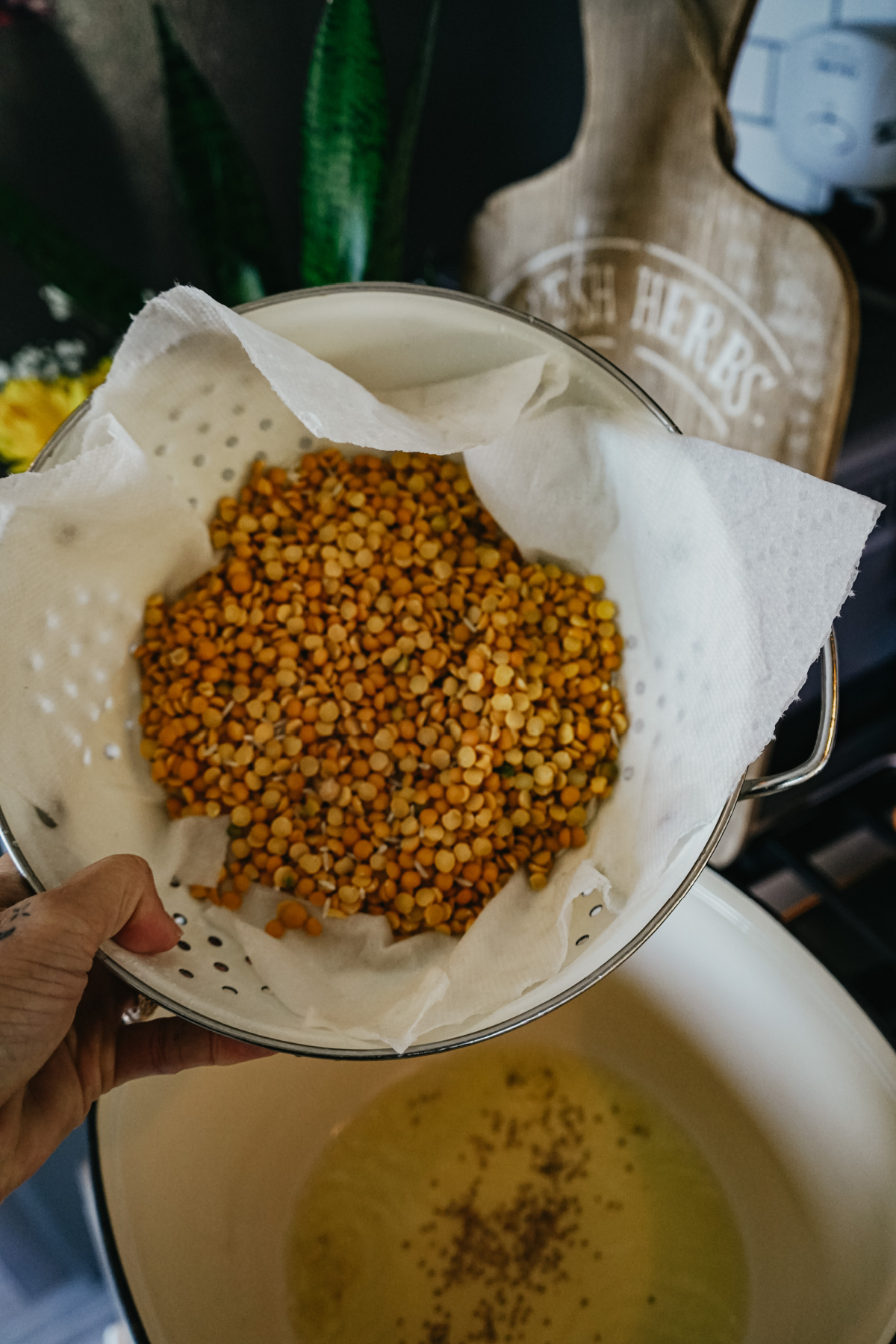
Benefits of An Ayurvedic Spring Cleanse
An ayurvedic spring cleanse consists primarily of eating a simple diet of kitchari—a savory porridge made of mung dal, rice, spices, and sometimes vegetables and ghee. For those who have undertaken more stringent cleanses, this may sound very mild and approachable. Nonetheless, the effects of a kitchari cleanse can be quite profound. After 3 to 7 days of cleansing, you may notice…
- balanced digestion
- a lighter sense of being
- improved sleep
- a clearer mental state
- a reduction in cravings
- less coating on your tongue
- improved skin clarity
Of course, not all of these benefits will occur for every person every time, but they are common results of an ayurvedic spring cleanse. In addition, on a subtle level, a cleanse can be a wonderful opportunity to simplify and prioritize. Since you will be cooking and eating more or less the same food every day, you can devote less energy and time to meal preparation and planning. Also, a kitchari cleanse asks you to take a break from caffeine, alcohol, and other drugs and stimulants (other than necessary prescriptions). Furthermore, though you can work and perform daily duties, it is generally recommended that you do your best to reduce stress and keep a more simple schedule during a cleanse. Therefore, this practice is also an act of self-care and of turning inward.
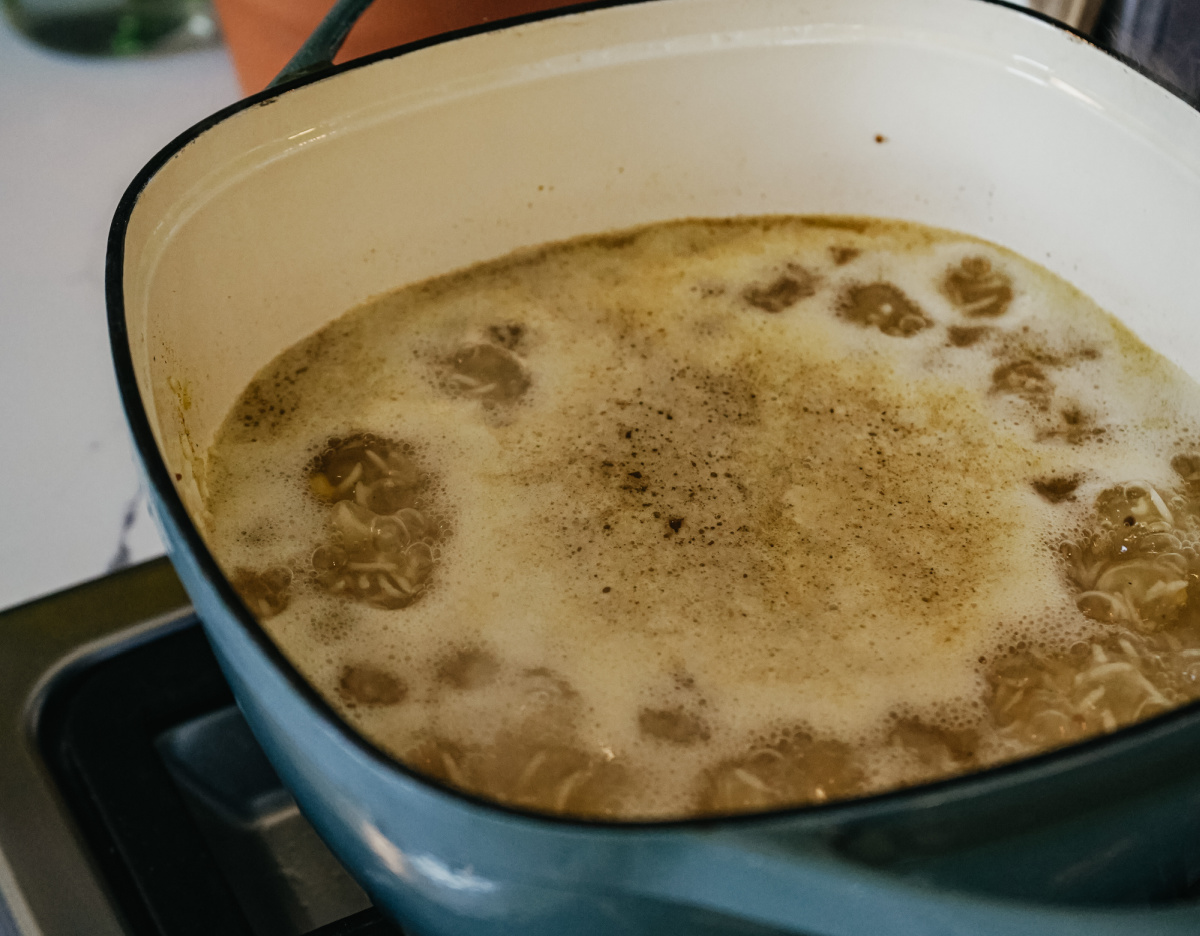
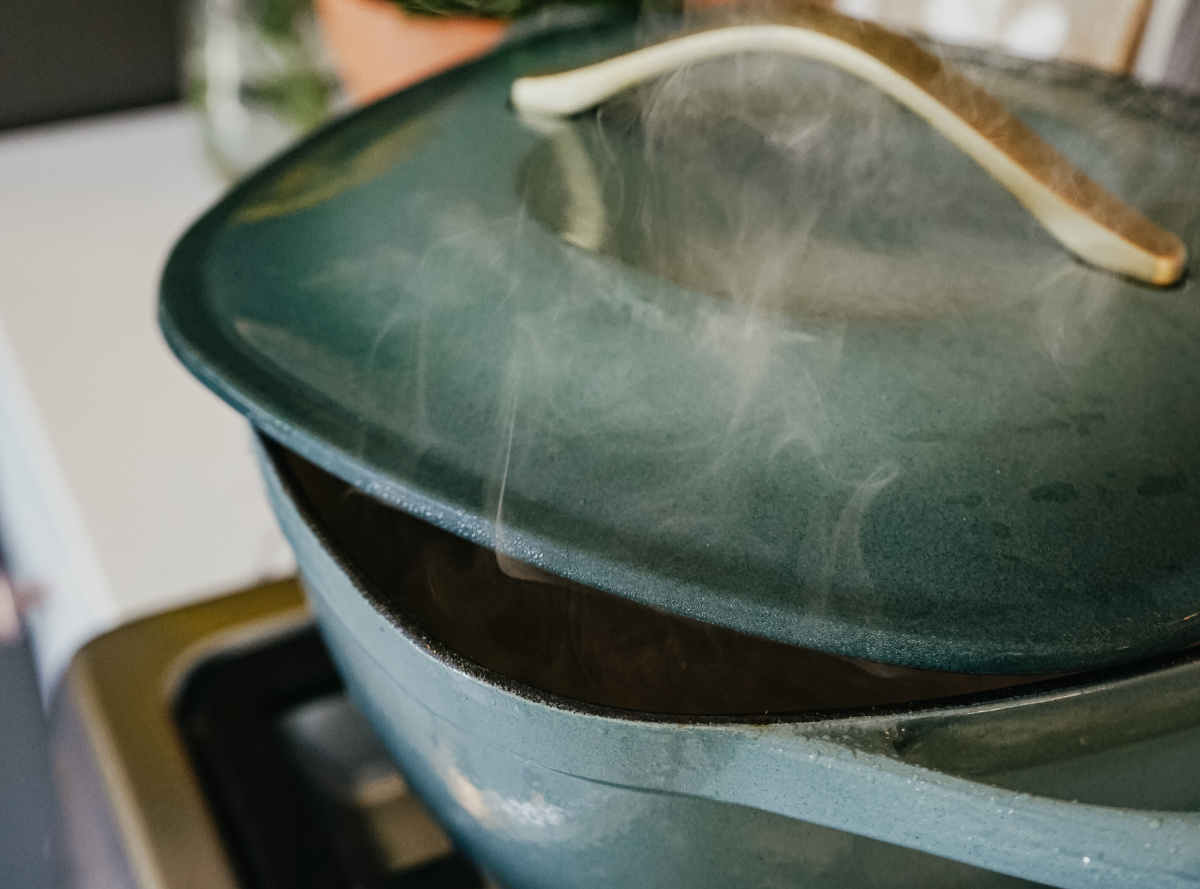
Ayurvedic Spring Cleanse: The Nuts and Bolts (Or Rice and Dal)!
If you have decided that you are a good candidate for a kitchari cleanse, now it’s time to understand the basic guidelines. As I mentioned earlier, an ayurvedic spring cleanse essentially means eating kitchari, kitchari, kitchari! A good length of time for a cleanse of this nature is 3 to 7 days. If you are new to cleansing or to this type of cleanse, 3 days is a good place to start. Or, even try a 1-day kitchari cleanse as a simple reset and a way to dip your toe into ayurvedic cleansing.
In a nutshell, an ayurvedic cleanse consists of:
Make a large pot of kitchari fresh every day. You will eat this for breakfast, lunch, and dinner.
Do your best to avoid snacking (read on for acceptable snacks and additions) and eat until satiety. There are many, many kitchari recipes to choose from. Here is a good kitchari recipe from the Ayurvedic Institute. Also, for more recipes, Usha and Vasant Lad’s cookbook Ayurvedic Cooking for Self-Healing describes kitchari recipes tailored to vata, pitta, and kapha doshas, as well as a tridoshic recipe.
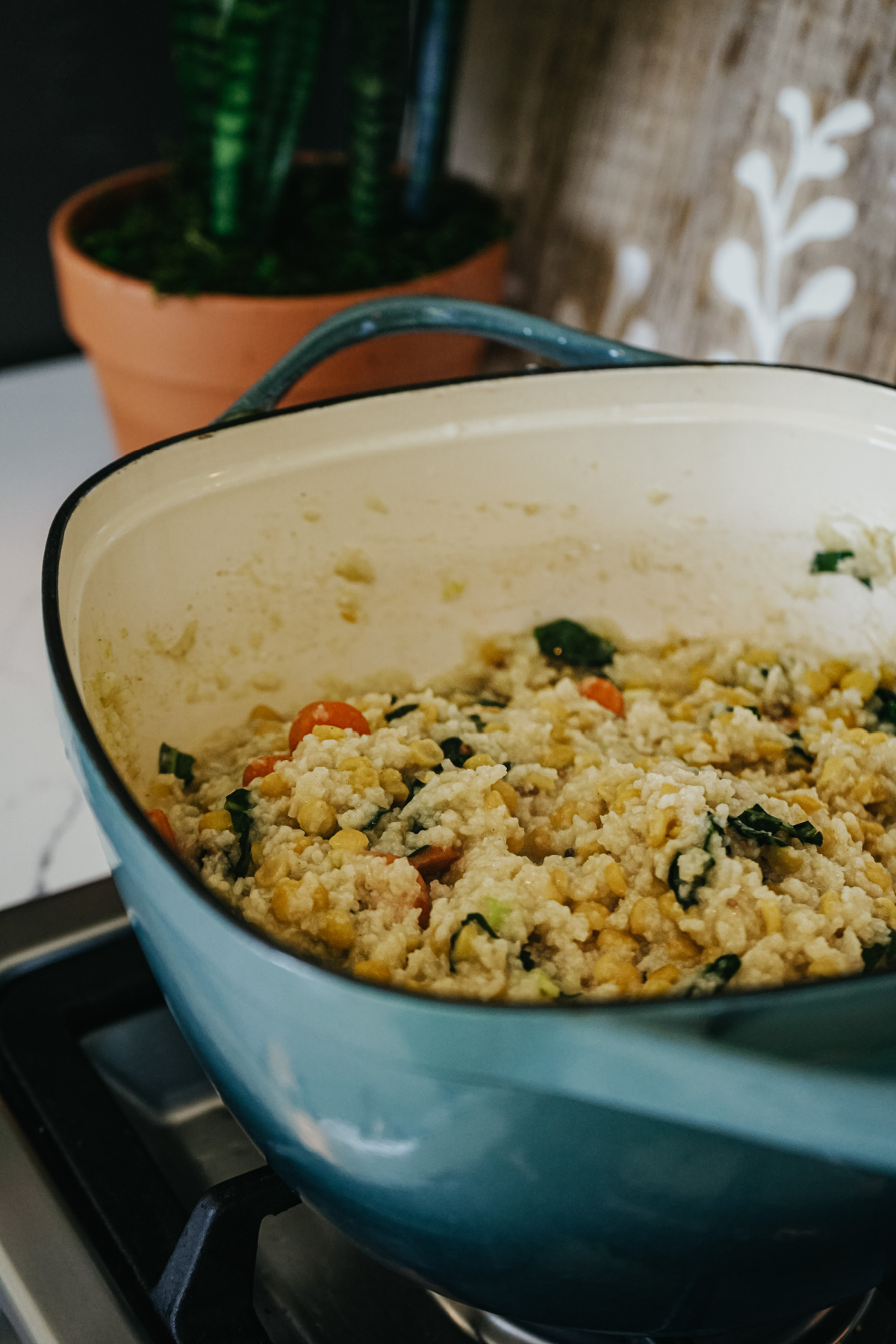
Kitchari Recipe
Adapted from the Ayurvedic Institute. There are numerous ways to prepare kitchari. This tridoshic recipe (appropriate for vata, pitta, and kapha types) is a great place to start. You may add seasonal vegetables or omit and optionally serve steamed as a side. Yield: 4-6 servings.
1 cup basmati rice
1 cup split yellow mung beans*
3 tablespoons ghee or coconut oil
approximately 6 cups water
1/2-1 inch fresh ginger (Zingiber officinale) rhizome, peeled and diced
1/2 teaspoon coriander (Coriandrum sativum) seed powder
1/2 teaspoon cumin (Cuminum cyminum) seed powder
1/2 teaspoon mustard (Brassica nigra) seeds
1/2 teaspoon turmeric (Curcuma longa) powder
1 pinch asafoetida/hing (Ferula asafoetida) resin powder (optional)
¼ cup fresh cilantro (Coriandrum sativum) leaves
1 cup seasonal vegetables, chopped (optional)
- Rinse the rice and mung dal.
- Heat the ghee or coconut oil in a medium to large sized pot. Add the mustard seeds, ginger, rice, and mung dal. Stir on medium heat for a couple of minutes, being careful not to burn the dal or rice grains.
- Add the water and bring heat to high. Add all other spices except for the cilantro leaves.
- Once mixture begins to boil, turn to a simmer, partially lidded.
- Prepare the vegetables by chopping into bite-sized pieces. Good vegetables for a spring cleanse include broccoli, cabbage, dandelion greens, cauliflower, spinach, carrots, and leeks.
- Cook the rice and dal mixture until it becomes soft, about 20 minutes.
- Add vegetables and cook for another 5-10 minutes, until vegetables soften.
- Add salt to taste. Garnish with fresh cilantro leaves and a squeeze of fresh lemon or lime.
*Split yellow mung dal can be a little tricky to find in grocery stores. However, it is ideal for use in kitchari as it has a creamy texture and is tridoshic and easy to digest. Look for split yellow mung beans in the bulk section of your co-op or health food store. Most Indian markets will carry it as well. Or, order online from specialty ayurvedic product suppliers such as Banyan Botanicals.
Drink plenty of warm water, lemon water, and if you are cold-natured, warm spicy teas, such as ginger and cinnamon tea. Cumin, coriander, fennel tea is also good and has a slightly more cooling effect. It is acceptable to add a little honey or maple syrup to your tea or lemon water.
Keep your schedule light. Don’t overwork yourself. Take time to rest and unplug in the evenings. Aim to turn off your phone and disconnect from emails and computer work at least 2 hours before going to bed.
If you feel weak, fatigued, or very hungry, a snack of sunflower seeds, green juice, or vegetable broth between meals is fine. Also, you may steam the vegetables separately from the kitchari and eat with ghee or other oils. Alternatively, you can substitute a simple oatmeal for kitchari at breakfast. However, avoid dairy and refined sugar.
Consider adding or maintaining ayurvedic daily self-care practices, called dinacharya. You don’t have to do them all, but try integrating one or two of these daily practices into your routine.
Eliminate caffeine, alcohol, and any other drugs or stimulants during the cleanse. If you must have caffeine, green tea is preferable.
Take care when transitioning out of the cleanse; do so gradually in order to allow for greater ease and more lasting effects. Reintroduce just one or two new foods per day into your diet. For instance, add yogurt one day, a whole-grain bread the next, then eggs, and so forth. Your body has become used to digesting a very simple diet, so it’s best not to overwhelm your agni (digestive fire).

In Closing,
An ayurvedic spring cleanse is a lovely practice for many reasons. It is a gentle yet powerful way to hit the reset button, and many people appreciate the flexibility of a kitchari cleanse. Though the process is fairly straightforward, there is room to adapt the protocol based on one’s constitution and needs. That said, cleanse wisely. If you experience extreme dizziness, weakness, or lightheadedness during a cleanse, it is best to gradually transition off the cleanse. If you have questions or doubts about trying an ayurvedic spring cleanse, it is always wise to consult with an ayurvedic practitioner. You will likely experience some ups and downs and challenges during a kitchari cleanse, but this time-tested practice of renewal can lead you toward a sense of greater wellbeing and is a wonderful way to honor the change in seasons.

REFERENCES
Halpern, M. (2012). Principles of ayurvedic medicine (10th ed.). California College of Ayurveda.
Nowland, A. (n.d.). What is kitchari and why we eat it for cleansing. Banyan Botanicals. https://www.banyanbotanicals.com/info/blog-the-banyan-insight/details/what-is-kitchari-why-we-eat-it-for-cleansing/
O’Donnell, K. (2015). The everyday Ayurveda cookbook. Shambhala.








